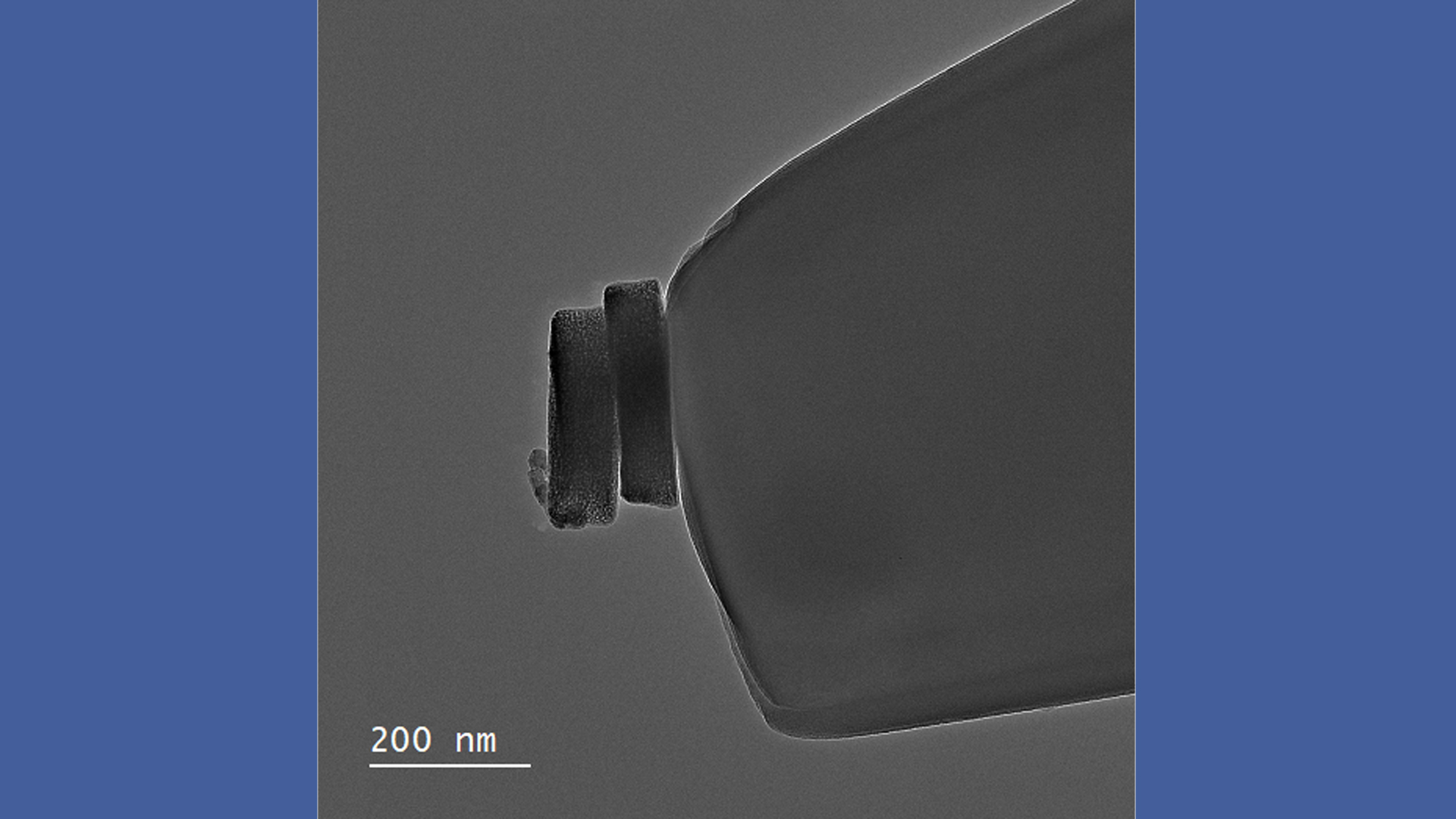
Robotic Arm Helps with Analysis
Catalytic Activity of Individual Particles
- 15.12.2020
Analyzing tiny nanoparticles separately is a challenge.A team from the UDE and Ruhr-Universität Bochum has developed a new technique that could make the process much easier.* The journal "Angewandte Chemie" covers the method in its latest issue.
Precious metal-free nanoparticles could serve as powerful catalysts in the future, for example for hydrogen production. To optimize them, researchers must be able to analyze the properties of individual particles. A new method for this has been suggested by a team from the Center for Electrochemistry at Ruhr-Universität Bochum (RUB) and UDE’s Institute of Inorganic Chemistry. The group developed a method using a robotic arm that allows them to select individual particles under an electron microscope and place them on a nanoelectrode for electrochemical analysis.
Identifying the Best Catalyst
For the studies, the scientists used hexagon-shaped particles of cobalt oxide with diameters of 180 to 300 nanometers, which the team from UDE consisting of Professor Stephan Schulz and Sascha Saddeler had synthesized. Since their catalytic activity often depends on their size or shape, it is important to understand the properties of individual particles in order to find the optimal catalysts.
The Bochum team analyzed selected cobalt oxide particles first microscopically, then electrochemically. The researchers then use electrochemical methods to measure its catalytic activity for the oxygen evolution reaction. For this purpose, a particle selected by the robotic arm is activated directly on the electrode; the researchers then use electrochemical methods to measure its catalytic activity.
In this way, the chemists analyzed several individual particles. “Here, they showed remarkably high activities in the oxygen evolution reaction, and the measured current densities exceeded commercially available alkaline electrolyzers by more than 20 times,” says Stephan Schulz.
* The work was funded by the German Research Foundation within the Collaborative Research Center/Transregio “Heterogeneous Oxidation Catalysis in the Liquid Phase” (TRR 247) and the Cluster of Excellence Ruhr Explores Solvation, short Resolv (EXC 2033-390677874), by the European Research Council in the Horizon 2020 Research and Innovation Program (CasCat, 833408) as well as by the Alexander von Humboldt Foundation and the Chemical Industry Fund.
Full press release of the RUB.
Original Publication
T. Quast, H.B. Aiyappa, S. Saddeler, P. Wilde, Y-T. Chen, S. Schulz, W. Schuhmann
“Single entity electrocatalysis of individual ‘picked‐and‐dropped’ Co3O4 nanoparticles on the tip of a carbon nanoelectrode”
Angewandte Chemie International Edition, 2020
DOI: 10.1002/anie.202014384, german: 10.1002/ange.202014384
https://onlinelibrary.wiley.com/doi/10.1002/anie.202014384
Further Information:
Prof. Dr. Stephan Schulz, Inorganic Chemistry (UDE), +49 201/18 3-4635, stephan.schulz@uni-due.de
Prof. Dr. Wolfgang Schuhmann, Analytical Chemistry (RUB), +49 234/32-26200, wolfgang.schuhmann@rub.de
Editor: Dr. Julia Weiler, RUB, +49 234/32 25228, julia.weiler@uv.rub.de
